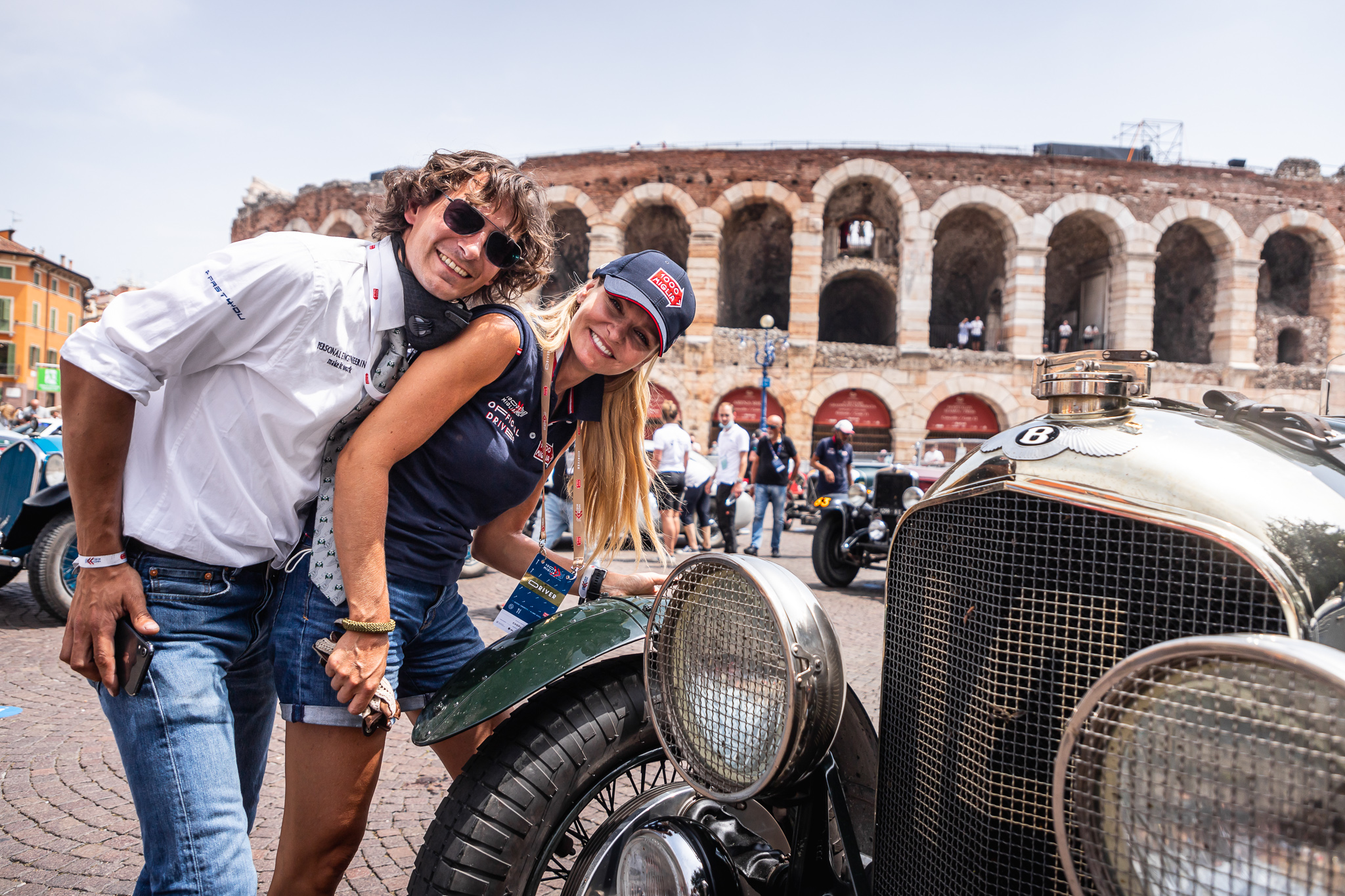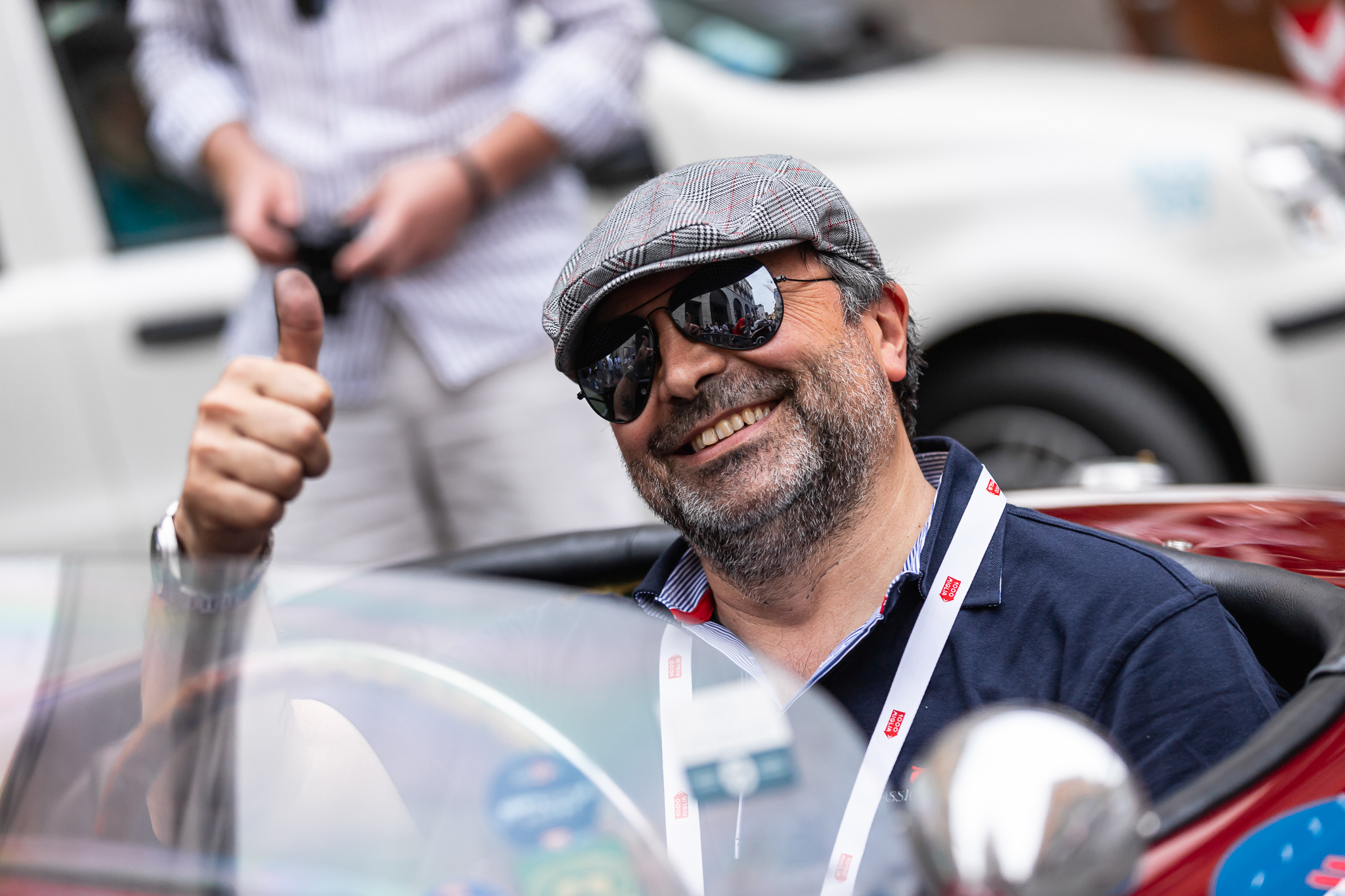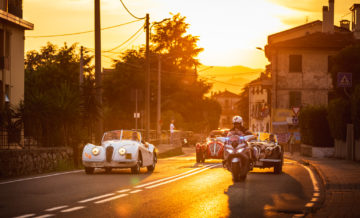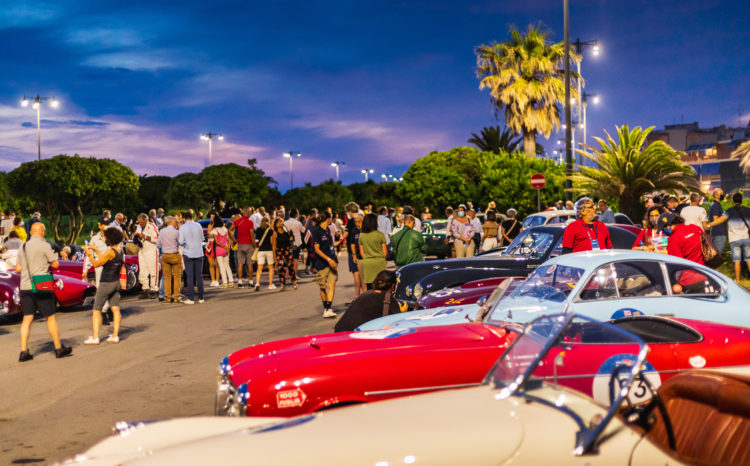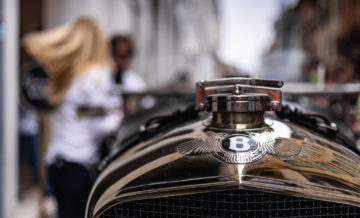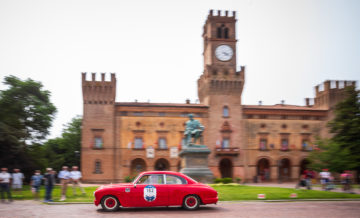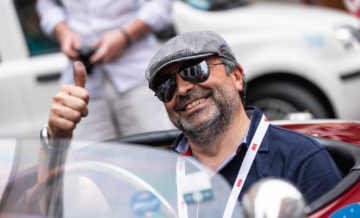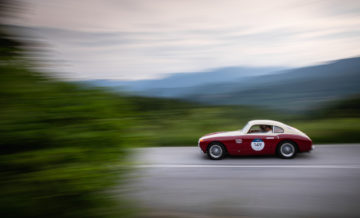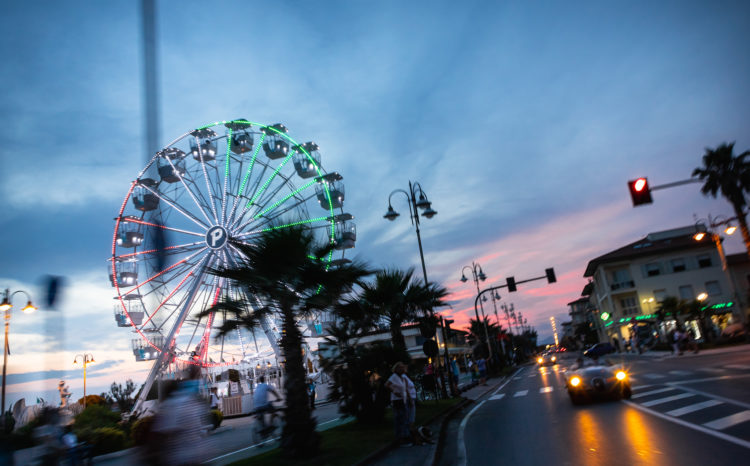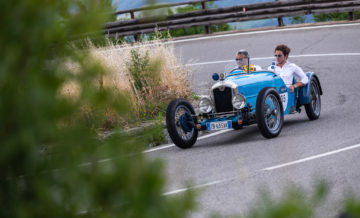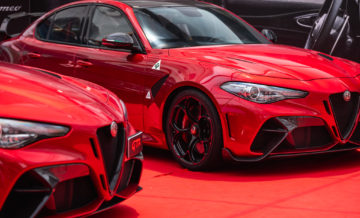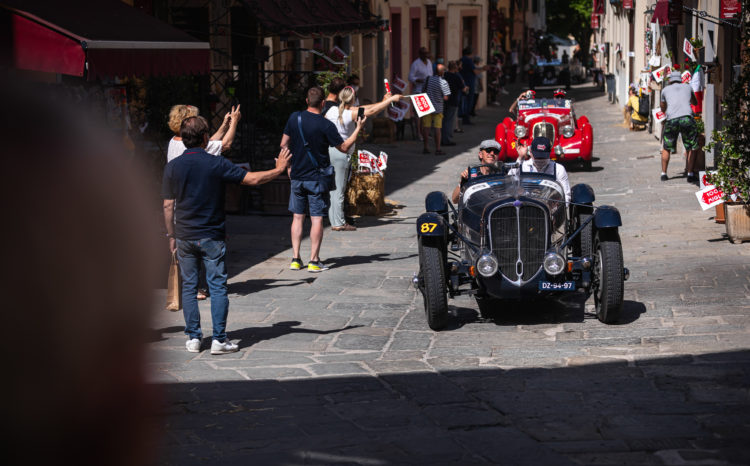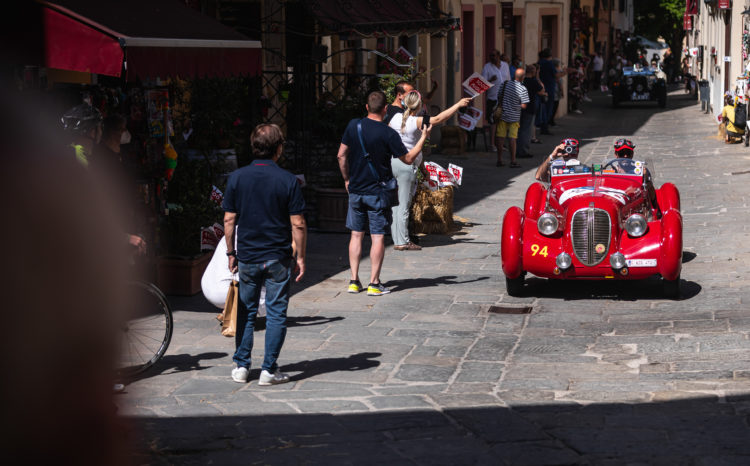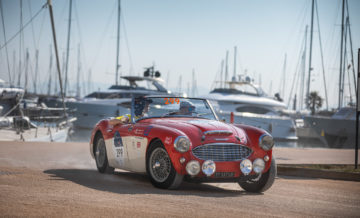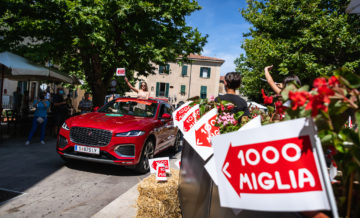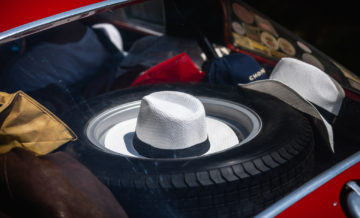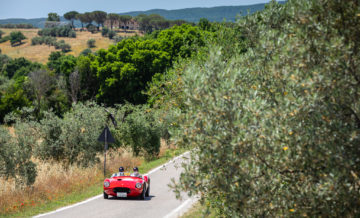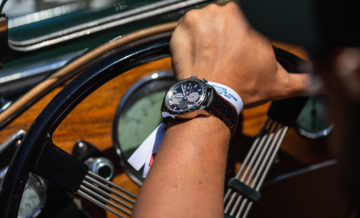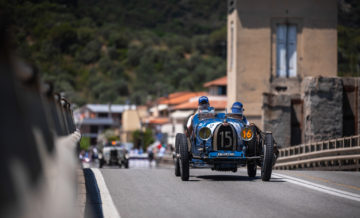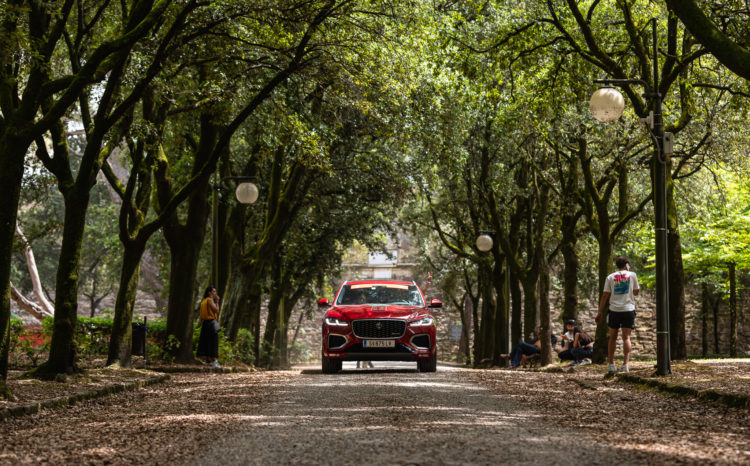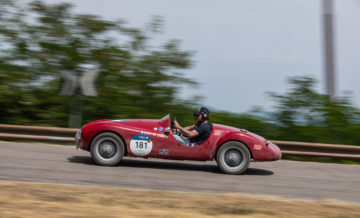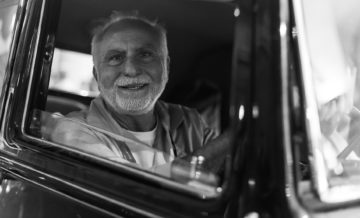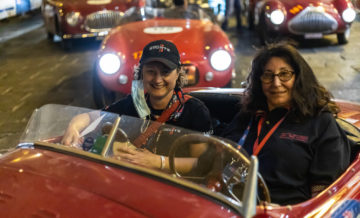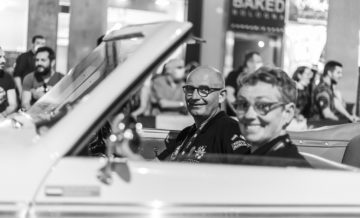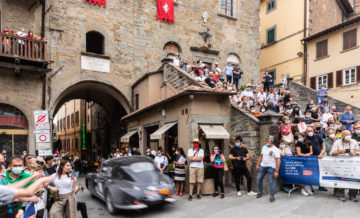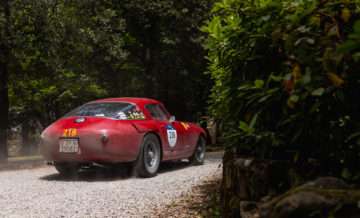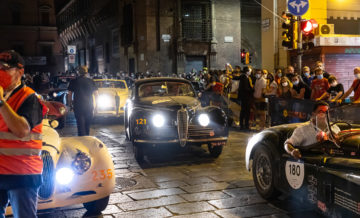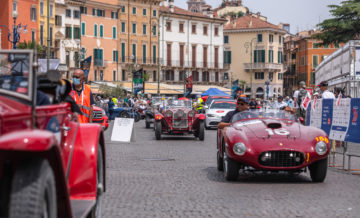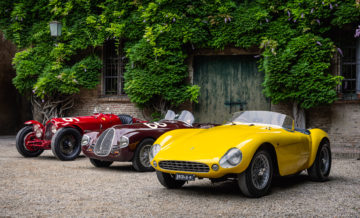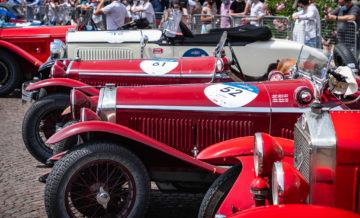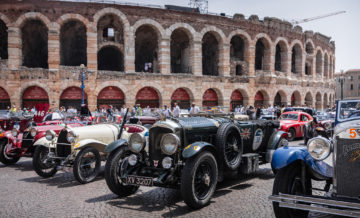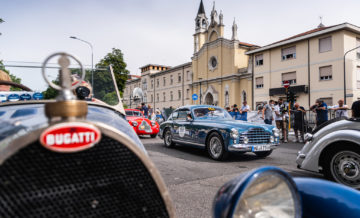
MILLE MIGLIA IS EXACTLY WHAT WE NEEDED SO MUCH
With a great lust for life
This year’s Mille Miglia was postponed by five weeks from the original plan and took place from 16 to 19 June. Other changes awaited us: for the first time in history, the route, which included some sections used for the original races, was reversed. Once again, we flew freely through Italy and felt the greatness of the moments.
Hope and joy. These are the words that symbolized the atmosphere of this year’s Mille Miglia. Even though in most of the streets of Italian cities, despite the prevailing heat, people wore veils (at least half), you could read joy from everyone’s eyes. And compared to last year, which took place in the autumn, this time more emotions have been added. Again, it’s MM (almost) like in the good old days!
Text: František Vahala, Foto: Ondřej Kroutil
BRESCIA
The traditional center of the Mille Miglia, or the most beautiful race in the world, was again full of people, all the restaurants were occupied. On the day of the start, it boiled here again the way we like it – people shouted at each other, greeted each other, met; and in the center of Brescia rumbled the engines that shook the window panes. Lunch at Piazzale Arnaldo was already a classic, as was the subsequent flight of the Frecce Tricolor squadron. We experienced the electrifying tension again and, together with the first cars, mingled to the route. Finally!
STARTING FIELD
The most beautiful race in the world can’t be ashamed, it’s as clear as a slap. And it didn’t: a total of 375 cars from 1927 to 1957 (the period when the original race was run against time) were allowed to start, with more than 70 vehicles directly participating in one of the original years.
The Alfa Romeo, currently celebrating its beautiful 111th anniversary, deserves mention – especially the three Alfa Romeo 6C 1750 models with the Zagato body. The identical car led to the overall victory of Giuseppe Campari in 1929 and Tazio Nuvolari in 1930.
Once again, the brutally loud Alfa Romeo 8C 2900 with the Botticella body was on display – a car that finished in 1936 with Carl Pintacuda in third place overall, then for the Scuderia Ferrari team. The current owner held her firmly in his hands again, accelerating powerfully on long straights with flowing hair. Real mechanical nirvana!
Maranello was not impoverished either – out of a total of 18 cars, we can highlight, for example, the Ferrari 340 America Spider Vignale, raced by Pietro Taruffi and the Ferrari 275/340 America Scaglietti also raced in 1952. We again appreciated the breathtaking performance of the Ferrari 375 MM Spider Pininfarina, which was confidently controlled by M. Stehle all the time. If something makes a generation of millenials constantly look up from the displays, it’s this hellish machine. Forget about any noise limits.
You can find whole starting list here.
Do you want other exceptional machines with a significant sports history? Here you go: for example, two Bugatti Type 35 or Bugatti Type 37, three official Maserati racing cars from Trident House, a total of 11 Mercedes-Benz 300 SL cars, including a prototype used during 1952 by the Stuttgart factory team for testing.
The front of the starting field was again decorated with OM 665 Superba models, associated with the first victory in the Mille Miglia 1927. But that was far from all, this year we were very captivated by four Delahaye race cars, especially the type 135 S from 1936 in matt blue. In the event, we again saw our favorite competitor with Czech-Slovak origin: Katarína Kývalová, who tamed her huge Bentley 4.5 liter Open Tourer.
Of course, the list would be much longer, but we would be here for a long time. In the Czech Republic, we have a rich tradition of car production and collecting, but if you are looking for a reason to go to Italy in addition to the above-mentioned amazing sports and racing machines from the 1930s, then these are various custom cars from the 1950s. We mean cars from Siata, Cisitalia, OSCA and others, as well as extremely rare and interesting buildings based on Fiat technology – Stanga, Stanguellini, Gilco, Ermini (my dearest, see here) and so on.
ROUTE & EXPERIENCES
I. Etape
A big change this year was the route, which was practically reversed compared to previous years. From Brescia, we went unusually to Cremona, Busseto and Parma and enjoyed applause of the fans. On the very first day, the first of three passes awaited us – Passo della Cisa, from which we then descend to the coast to Viareggio, where was the destination of the first day. As always, we were surprised by the length of the ride on the first day (as if we weren’t used to it for a long time).
The sweaty arrival to Viareggio reveals that Italy is not always just a beautiful and colorful country, but can also be pretty dirty. The flat concrete lair is perhaps only enlivened by palm trees and neons of open restaurants, but its greatest glory is long gone. The racing machines roar in the gloom, and in a moment, the whole coast smells of gasoline and oil. And then we enjoy the madness, here we help to push someone, here we jump aside, when we focus our sights under the hood as admiring the hissing in-line six-cylinder. The atmosphere cannot be transmitted. The hotel is located in the arid center of Pisa and we fall asleep after a few beers. After endless hours, finally a shower and a bed.
II. Etape
We have a lot of kilometers ahead of us, so we get up early. Quick breakfast – cappuccino and some very tasty brioches. We continue along abandoned car repair shops with smashed glass, large empty warehouses and again arid streets. We passed drive through the center of Pisa, because the journey to Rome is long. The landscape is becoming more and more interesting – we are speeding through Bibbone, Castagneto Carducci, Massa Marittima to the picturesque Castiglione della Pescaia. Finally beautiful Italy! And great pizza at Stefan’s random restaurant. There was also a limoncello. Constant stops for photography and a sharp pace take their toll, in the end we decide to disconnect at Lake Bolsena and find accommodation near the route at Orvieto, specifically the amazing home environment of the farm Podere Pescara. After a whole day full of driving, when you don’t know where to turn first and have to constantly 100% focus on cornering, the pool, grill and beer are exactly what we need. We are driven to the bed by midnight and the system of automatic garden irrigation.
III. Etape
We finally got up early enough to enjoy the Ferrari Tributo. In addition to a number of newer machines, the crew of the 250 Lusso – already with a damaged front – deserves the most respect, but also unique machines in the form of the Ferrari Monza SP1 and SP2. Ferrari F40 and F50 go incomprehensibly differently… Well, maybe next time!
The third day is usually critical and this also applies to our crew. We are tired, the complexity of the summer event is reflected in all four members. We hate air conditioning, but it’s necessary. Citrus fruits are already ripening around and fields of grain are not green, as we are used to in May, but gold.
Once again, we experience breathtaking experiences while driving through crowded city centers. These are exactly the moments that are etched in the memory – espresso and cold sparkling water somewhere in the alley where the unstoppable convoy roars. Such are the clichés about the old men who looks at the passing Ferrari as a symbol of the engineering skill and pride of the whole nation. Something you can’t experience elsewhere… Again a lot of turns, actually one alternates with the other – we go through Cortona, Arezzo, Montevarchi and other places to Barberino di Mugello, from where we climb again to the hills.
Following are our favorite passes – Passo della Futa and della Raticosa – where we enjoy the company of various groups of enthusiasts. There are also various beautiful Lancia Integrales, a group of Lotuses, a lot of different Porsches, but also Dodge Viper or completely “normal” sharp hatchbacks such as Renault Clio Williams. Once again, we fail to meet a group of supersports associated under the name 1000 Miglia Experience, so we are deprived of Pagani’s creations. At least Dallar Stradale flew around. Pleasant. The best sound from the “new” cars: definitely the Alfa Romeo 8C Competizione Spider. Beautiful machine.
If anything had a real atmosphere that kicked us, it was the evening of Bologna, finish of the day. It lived there! Full of street people, the rumble of the crowd, all those smells and classic race cars. Pleasant small-talk with nice gentlemen from the USA, who arrived by a very unseen Studebaker Silver Hawk. Even such cars (including several Chryslers) can be seen among the flood of Jaguars, Porsches, Aston Martins, Mercedeses, Alfa Romeos, Fiats, Lancias, Triumphs, BMWs, Austin-Healey, MGs and others. Or, for example, Citroën 2000 Sport or Traction Avant. Or the brutal Lotus Eleven Climax, which literally licked the asphalt.
An incredible evening in the stone hearth of the streets of Bologna, where greenery is completely missing. At around 11 o’clock we disappear back into the background of a guest house hidden somewhere between Bologna and Modena. Classic beer and sleep…
VI. Etape
The very first part leads us through Modena, in terms of passage well organized. We love the adrenaline at the red lighted crossroads, we love driving in the opposite direction and everything that belongs to MM. We are constantly on the lookout for Pandas of all kinds, who like to turn left. Virtually anywhere. We fly through the landscape again and spin the engine to keep up with the fast Jaguars C-type and D-type or the brutal Ferrari. Even pre-war cars are not far behind and in today’s traffic proves that everything essential has already been invented.
Modena is quickly behind us, we’re heading to Mantua for lunch. In the side alley, we again feel the famous dolce vita when we taste local specialties (mostly pasta in various styles or lasagne). Cities are getting fuller. We just said that the last day had the best route when the golden nail came: Sirmione and the shores of Lake Garda.
SALÒ
Sirmione is such a classic – reaching the end of the elongated peninsula and returning the same way back is a genuine Italian-style promenade. Even in a new car, we feel in the center of attention. But that is not the end of the path to fame. Although during the Mille Miglia the competitors were waiting for 70 accuracy tests (usually several connected in a row, with different distances from hundreds of meters to kilometers), Saturday’s stage is much calmer. And it also brought something that I don’t remember from previous years – a comfortable journey to the finish. Almost the most picturesque part of the race took place while passing along the shores of Lake Garda. For the first time ever, the whole column looked at the town of Salò, where we drove right along the promenade, just past the crowded restaurants. The best part was that a beautiful Fiat Ottovu was driving in front of us with a very loud exhaust, which was showing off all the time.
VICTORY
The passage through the finish line of Mille Miglia was then only a peaceful end to the whole event. Dozens of cars did not finish (mainly due to technical problems), but all those who passed the ramp on Vialle Venezia after four days deserve maximum respect. It was difficult even in a new car, let alone in an interwar open piece. After all, the faces showed joy and fatigue mixed with sweat and the smirk of the road. This year’s winner was the crew of Andrea Vesco / Fabio Salvinelli with Alfa Romeo 6C 1750 Super Sport, the second place was taken by the crew of Andrea Luigi Betometti / Gianluca Bergomi with Lancia Lambda Spider Casaro and the third place was taken by the team Gianmario Fontanella / Anna Maria Coelli, again with Lancia Lambda.
It is also worth mentioning that thanks to the system of coefficients favoring older cars, only cars under the year of 1930 were placed in the first 30 positions. The nice fact reminds that the Mille Miglia race simply cannot be won with a car from the 50s. Older simply have priority…
SPECIALITIES
In addition to the race itself, several other special races were on display. Over 100 classic and (mainly) modern Ferrari cars were presented in the traditional Ferrari Tributo. This time, Mercedes-Benz paid tribute to Sir Stirling Moss, the undefeated winner of the 1955 Mille Miglia. His original 300 SLR were first exhibited at the Mille Miglia Museo and then launched throu start. In addition, the Mille Miglia Friends event featured a number of different modern Mercedeses: in addition to the McLaren SLR Stirling Moss, there will also be a SLS from the United Arab Emirates, where another special edition of the Mille Miglia will take place. The Bussink AMG GT Speedlegend, or one of the five speedsters built by the independent company from the AMG GT R, attracted a lots of attention. But we know, who was the best, dont we?
Among other things, the event was attended by a selected group of modern supersports, associated under the name Supercars Owner Circle. Various Lamborghini, creations by Horazio Pagani or Bugatti Veyron were on display.
The whole circus was complemented by a somewhat controversial issue in the form of the “race” Mille Miglia Green. As the name suggests, it was a competition of purely electric vehicles. We will not talk about their meaning, perhaps the information will suffice that only three (!) cars started in total. Whether Jaguar I-Pace, Porsche Taycan or Mercedes EQA won is probably not important…
JAG THE COMPANION
Our companion at Mille Miglia was a slightly purebred Jaguar. This time, with the support of Jaguar Austria and Jaguar ČR, we set off with a newly redesigned SUV Jaguar F-Pace in the P400 R-Dynamic version. The massive red car proved to be a great companion, especially with the new in-line six-cylinder Ingenium with 400 horsepower (and 550 Nm). In addition to the turbocharger, the novelty also uses an electric compressor, which helps to produce torque at low engine speeds. Luxurious interior is a necessity for comfortable handling of a demanding journey, there was also a glass roof, which was enjoyed not only by a pair of photographers. The great sound of the engine completed the flawless work of the advanced chassis. Thank you!


